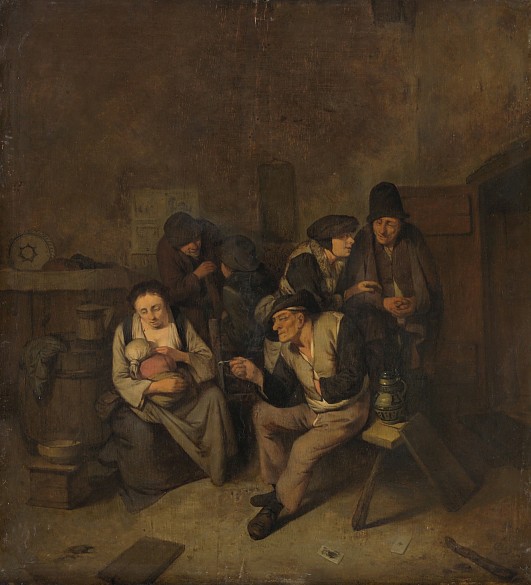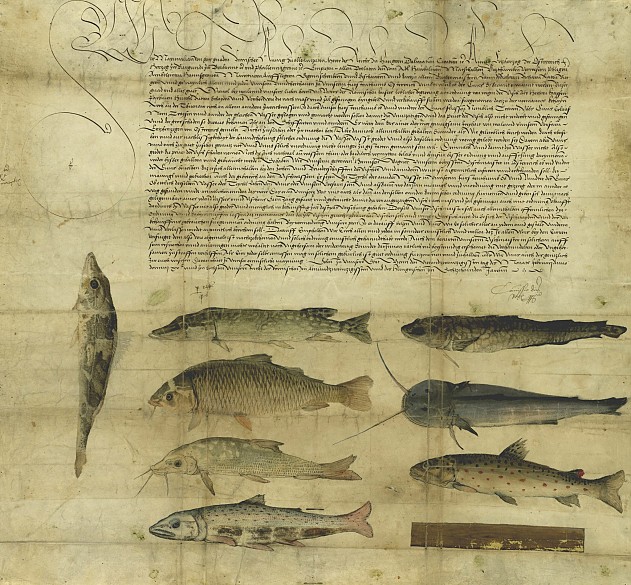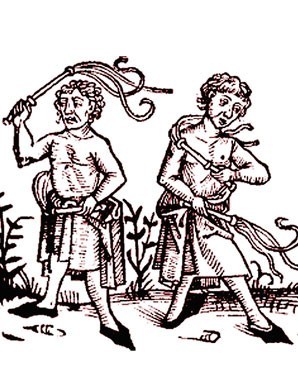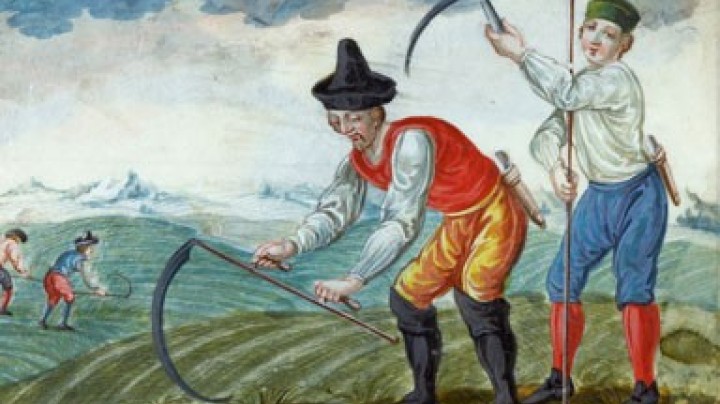Large areas of land completely deserted – Demographic trends and agricultural production
As people living in the countryside moved to areas with better soils in the wake of the plague, entire settlements were deserted and agricultural production changed.
Up to the middle of the fourteenth century there had been a steady increase in the population of Europe. Since the cultivation of cereals could not be expanded indefinitely there was also a steady increase in the price of grain. The sharp decline in the population during the plague epidemic of 1348-9 also led to a drop in demand for cereals, with the result that prices collapsed and an agricultural crisis ensued. On the other hand wages and prices in the commercial production sector showed considerable increases as the plague led to a shortage of labour.
The fall in demand and grain prices led many peasants who lived in areas where the soil was of very poor quality to give up their farms. It was not only individual houses but also whole settlements and tracts of agricultural land that were abandoned, so that so-called ‘wastelands’ were created. In particular in mountain areas there was a fall in both the density of population and the altitude up to which land was settled. There were large regional variations in the extent of the wastelands: in the east of present-day Austria there were relatively more of them, accounting for some eleven per cent of farms. In Tyrol, on the other hand, the late Middle Ages saw the emergence of new centres of population, thanks to long-distance trade and mining.
The changes in population and prices also had an impact on agricultural production. People living in rural areas supplemented the cultivation of cereals with buckwheat and started to grow new crops, including flax, hops, poppies, rape, fruit, wine and mustard. They also expanded their fish, meat and dairy businesses. For instance, the taste for high-fat foods meant that clarified butter became an important product, and now it could be produced in larger quantities thanks to new equipment like butter dashers (a kind of pestle) and later butter churns. In order to increase their incomes many country people also took on a second job. They could, for example, provide transport services or work as lumberjacks, millers or smiths, or take up some form of cottage industry like spinning or weaving, or making baskets, mats or brooms, carving wood, and so on.















